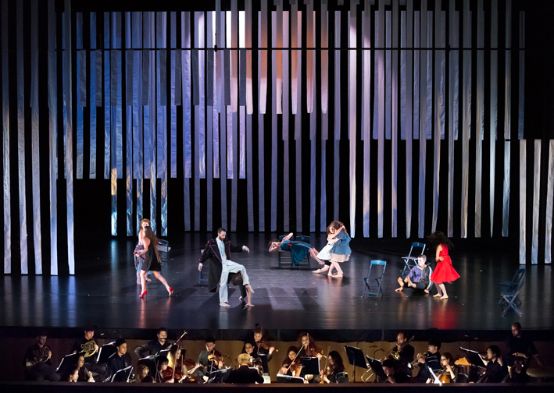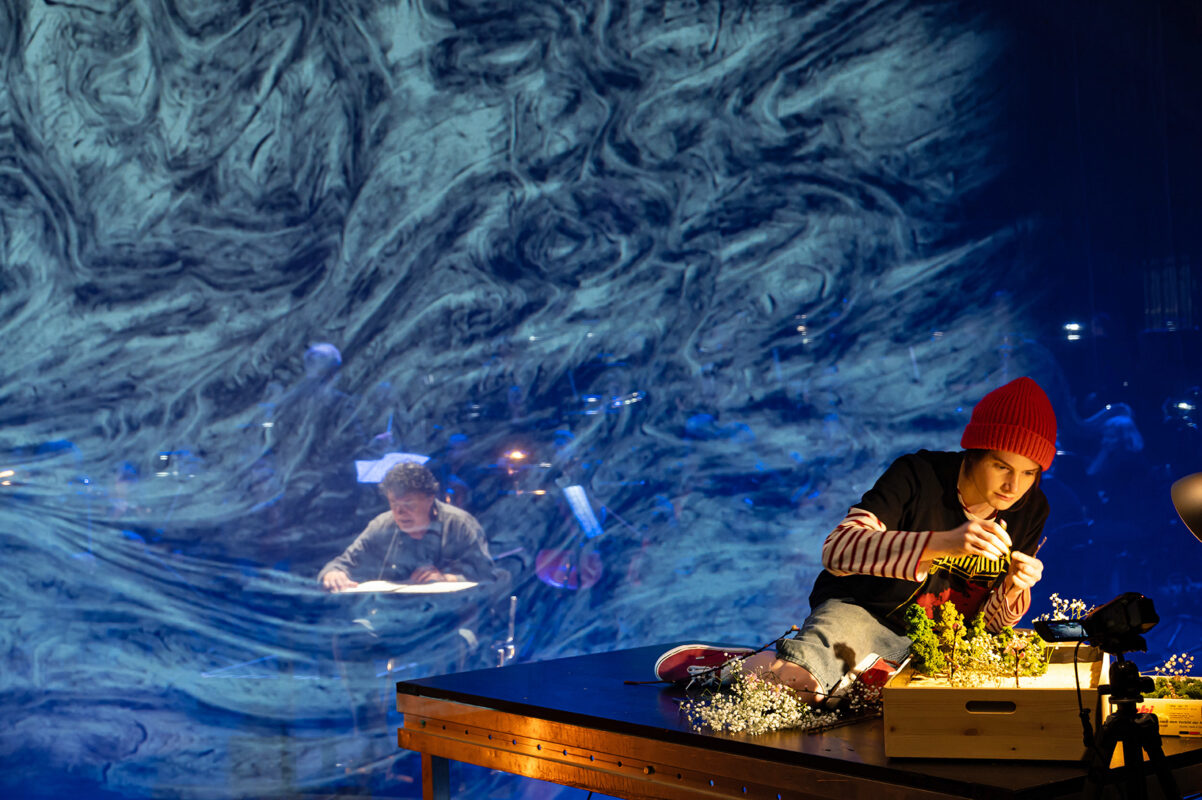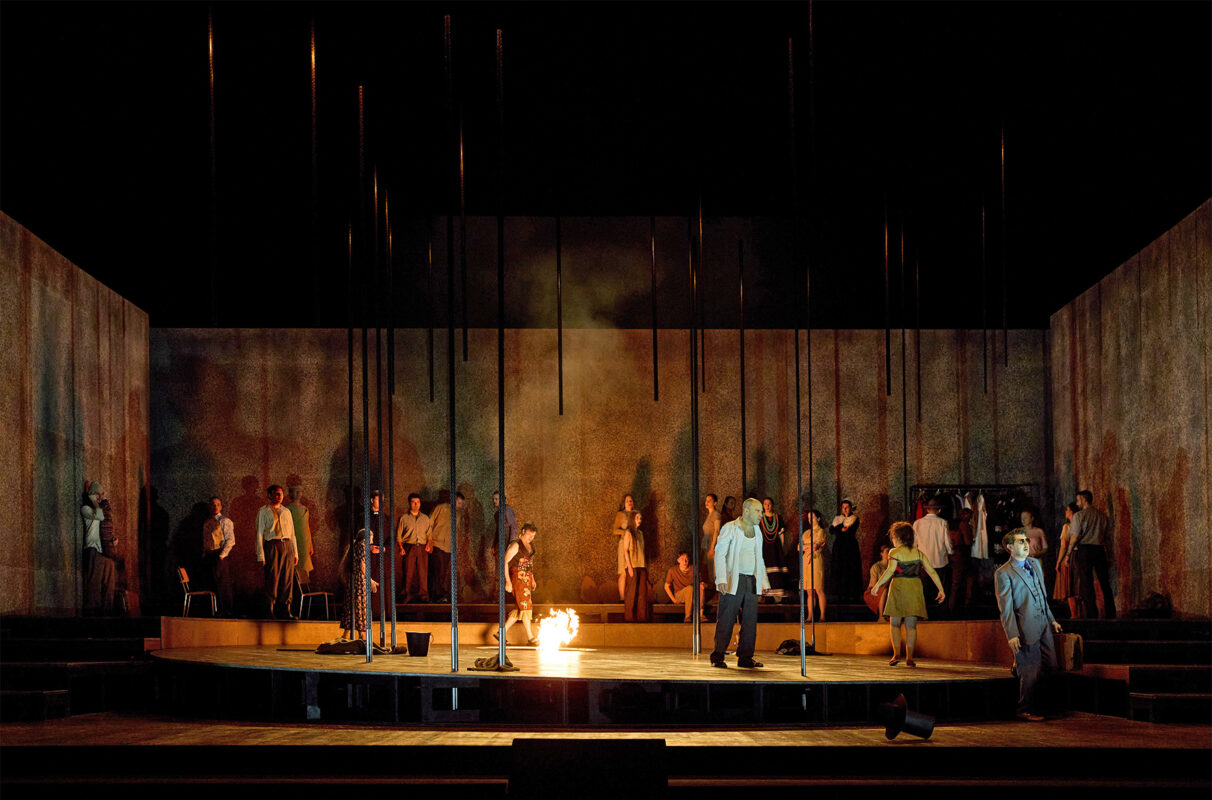Picasso text as music theater
Students in Italian-speaking Switzerland bring a surrealist curiosity to the stage: a successful experiment.

On March 14, 1944, five months before the end of the German occupation of Paris, an illustrious group of literary figures gathered in the rooms of the Leiris gallery owners to perform a new play in a staged reading: Le désir attrapé par la queue. It was written by Pablo Picasso, directed by Albert Camus and starred Michel Leiris and his wife Louise as well as Raymond Queneau, Jean-Paul Sartre and Simone de Beauvoir. Among the guests were Georges Braque and Jacques Lacan. The private premiere was a chamber play in six short acts, written in the most beautiful surrealist manner according to the principle of "écriture automatique", spontaneous-associative writing largely uninfluenced by reflection. Picasso's exuberant creative energy manifests itself in a firework of bizarre metaphors and absurd associations of concepts. The protagonists have names such as Plumpfuss, Zwiebel, Torte, Cousine, die fette und die leere Angst - at least that is what they are called in the German translation by Paul Celan, which was published in 1954 under the title How to take wishes by the tail was published. Four years earlier, the play had been staged for the first time in London, followed by a performance in a basement theater in Bern in 1956, directed by Daniel Spoerri and with stage design by Meret Oppenheim. Since then, the surrealist curiosity has been performed here and there from time to time.
Wit and ingenuity
The most recent production was staged in Italian in Lugano in May. The participants in this production by SUPSI, the Scuola Universitaria Professionale della Svizzera Italiana, were students from the Conservatorio della Svizzera Italiana, the Academy of Teatro Dimitri and the "Visual Communication" department. With Brecht Threepenny Opera, with Satyricon by Bruno Maderna and Kraanerg by Iannis Xenakis, challenging projects had already been realized in previous years, and the current production of the Picasso text continued the series at a high level. Such experimental projects are obviously in the best of hands with the young talents, who are unencumbered by routine. The enthusiasm of the performers on stage, the witty and imaginative staging and the orchestra excellently rehearsed by Arturo Tamayo, from which the clarinettist stood out several times with beautifully played solos, ensured a resounding success with the audience, and one wonders why the established institutions cannot or do not want to do something like this.
Multimedia synthesis of the arts
The experimental openness of Picasso's text allows for any kind of realization, and the present performance was the exact opposite of the intimate premiere of 1944. The large stage in the sold-out hall of the LAC Lugano was used to its full width; in the orchestra pit in front of it was an ensemble of stately chamber orchestra size - all in all, a dispositive as in an opera performance.
Language, acting, dance, music and a stage set consisting of a few graphic, simple, mobile elements merged seamlessly into a multimedia Gesamtkunstwerk. This is obviously a specialty of the experienced Czech director Pavel Štourač, as can be seen from the videos available online. He demanded everything from the actors in order to create a varied sequence of grotesque scenes, from danced choreography to solo pantomime and role-playing. And all of this in connection with a textual level in which the language presented itself in ever-changing functions: as a read recitation and as role prose, as a body of text split between several characters, as a dense polyphony of speech, excited tutti cries or as material for experimental sound and syllable acrobatics. The simultaneity of speaking and acting in scenes of sometimes almost circus-like proportions posed no problem for the performers, nor did the volumes of text in Italian, French and English that had to be memorized. This gave each individual scene its own character. The insinuations that Picasso put into the mouth of Plumpfuss in dialog with his beloved cake were choreographically counteracted in a witty way, and the scene was suddenly extended into the auditorium with an actress wandering through the rows of audience members.
Successful combination of text and music
It was a happy idea to combine Picasso's text with two works by Stravinsky written around the same time. Tamayo and the orchestra had Danses concertantes and the orchestra concert Dumbarton Oaks which were then cleverly linked to the spoken text. Larger parts were inserted as independently audible intermezzi, others were used as a basis for small monodrama parts or placed in excerpts between the text blocks. The rhythmically and intonationally delicate pieces were performed with concentrated care. The all-round successful conversion of Picasso's spoken text into a piece of lively music theater makes us curious about next year's sequel.








